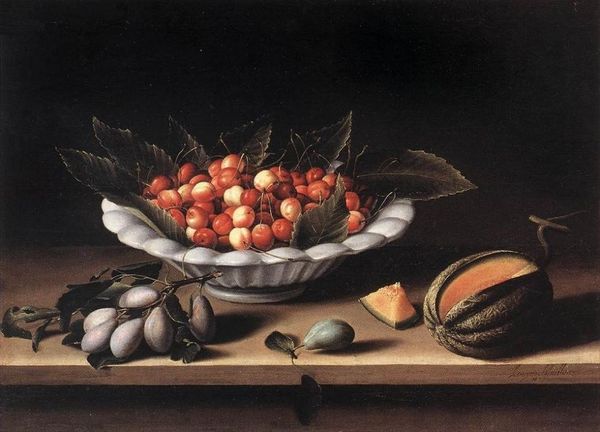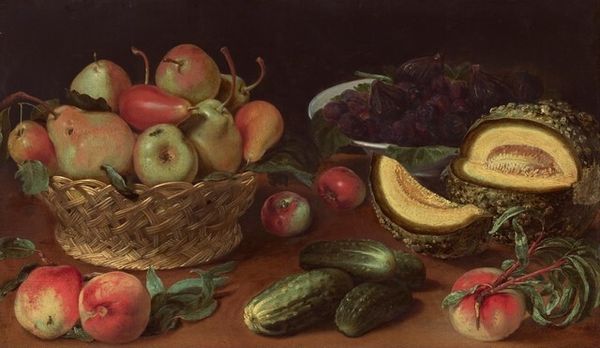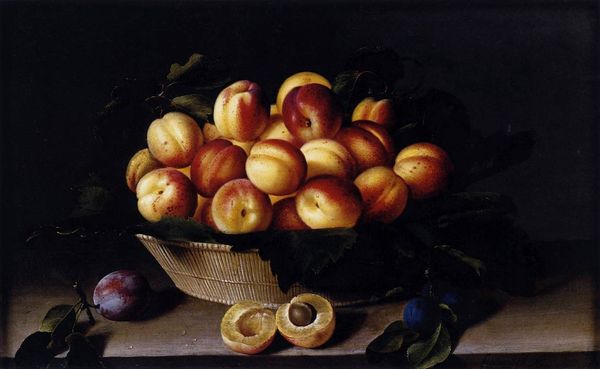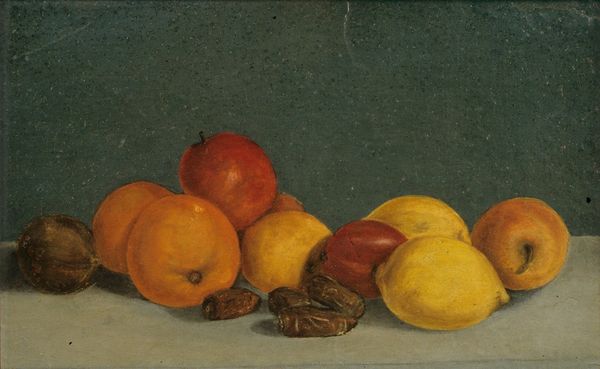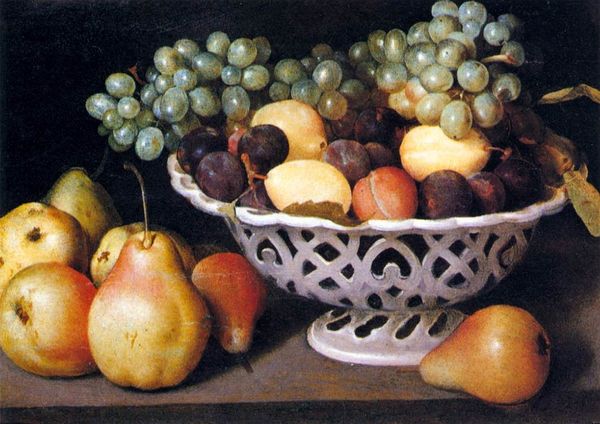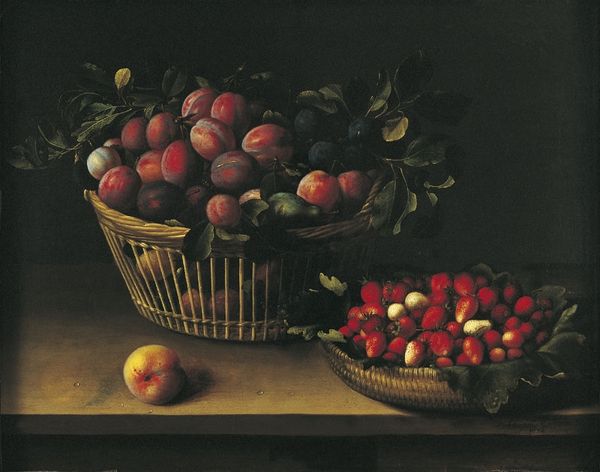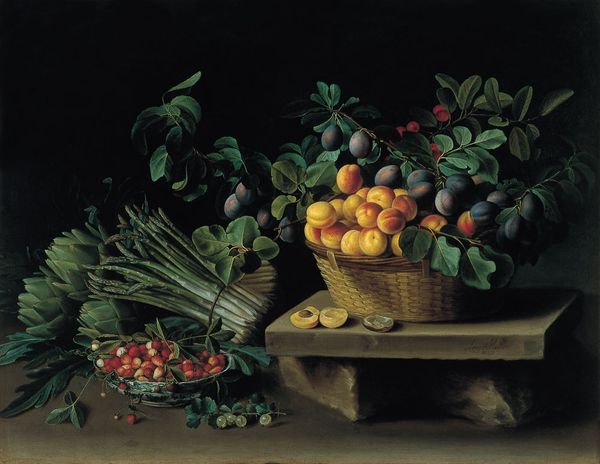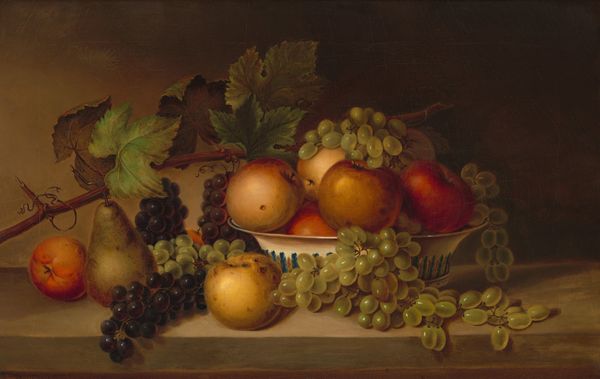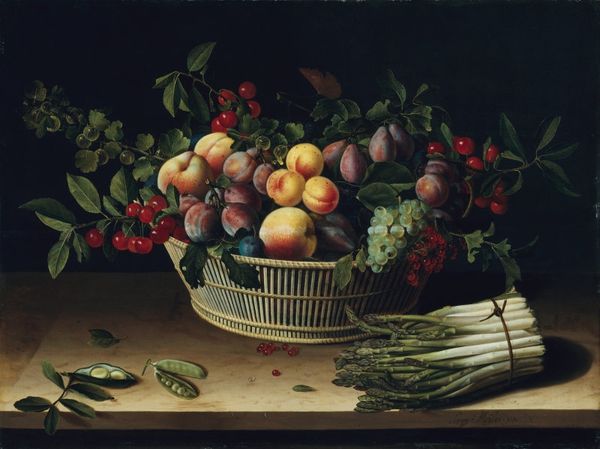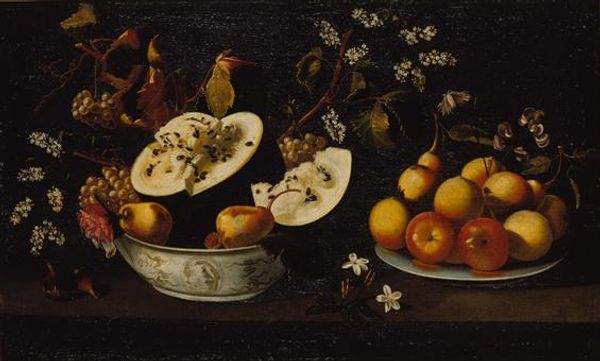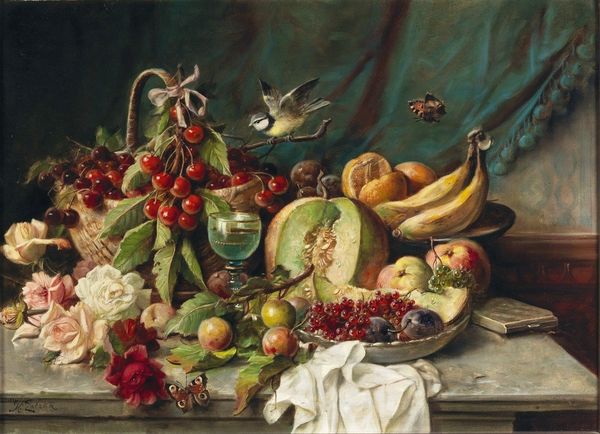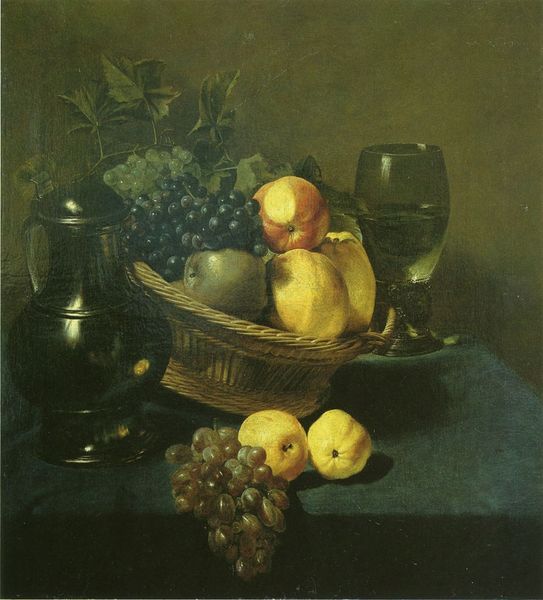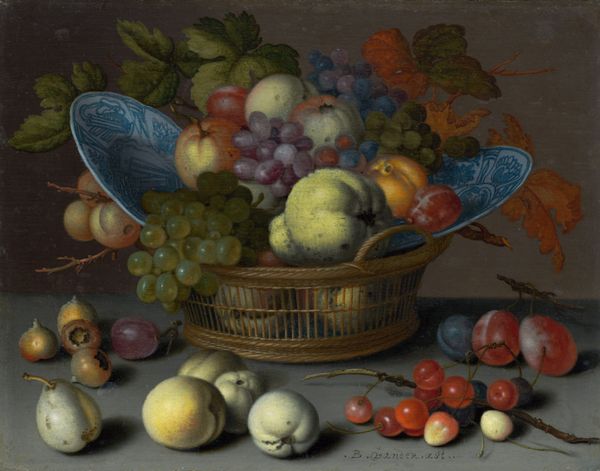
painting, oil-paint
#
baroque
#
painting
#
oil-paint
#
oil painting
#
chiaroscuro
#
trompe-l'oeil
#
italian-renaissance
Copyright: Public Domain: Artvee
Curator: Standing before us is Caravaggio's "Still Life with Fruit," painted around 1603. It's an oil painting that exemplifies the Baroque style, known for its dramatic use of light and shadow, a technique called chiaroscuro. Editor: My first impression is one of abundance tinged with melancholy. The stark contrast of light on the ripening, bursting fruit against that dark backdrop creates a sense of drama and, perhaps, impending decay. There's a story here that goes beyond mere visual pleasure. Curator: Absolutely. Caravaggio was masterful in embedding symbolic meanings into his compositions. Fruit, historically, carries potent allegorical weight, often related to mortality and the ephemeral nature of life. And consider trompe-l'oeil; the way the fruit seems to spill out towards the viewer enhances this feeling. Editor: Right, and it’s essential to think about the socioeconomic context. During Caravaggio’s time, access to such a variety of fruit would signify privilege and prosperity. Yet, depicting this abundance alongside clear signs of spoilage can be interpreted as a commentary on the fleeting nature of material wealth. It suggests a society grappling with inequalities and the precariousness of power. The dark background amplifies this tension by hiding or overshadowing details in darkness. Curator: Interesting! Furthermore, the selection of fruits—pomegranates, grapes, figs—resonates with broader cultural narratives related to fertility, transgression, and redemption that were circulated widely via illuminated manuscripts. Seeing a split-open pomegranate reminds me of stories about earthly desires. Editor: These symbols create layers. It makes us confront the realities of desire, excess, and corruption—themes as relevant in the 17th century as they are today. Caravaggio used images to communicate more broadly, perhaps a caution on political and social behaviors he opposed? Curator: Perhaps it is meant to invite the viewer to a form of ethical contemplation. How do we negotiate abundance? What responsibilities accompany earthly pleasures? Editor: Food for thought—literally and figuratively. This isn’t just a pretty picture of fruit. It’s a layered composition that subtly questions assumptions of our world. Curator: I see this “Still Life” as a somber reflection on beauty, fragility, and time, echoing fundamental aspects of our human existence across all contexts.
Comments
No comments
Be the first to comment and join the conversation on the ultimate creative platform.
